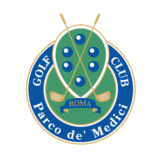La storia
Perchè Parco de’ Medici?

Adjacent to it, on the opposite side of the motorway, is the historic village known as the Castello dei Papi (Castle of the Popes), which was the country residence of numerous Pontiffs during the Renaissance, in particular Pope Leo X, born Giovanni de' Medici, son of Lorenzo , whose famous painting by Raphael is preserved in the Pitti Gallery in Florence. As you can see, the residence is an architectural ensemble formed around an initial nucleus built in the second half of the 15th century under the pontificates of Sixtus IV and Innocent VIII, a residence subsequently extended by Cardinal Alidosi under Alexander VI and Julius II. Pope Alidosi's name is inscribed on the architrave of the large windows with a broken cross, reminiscent of those in Palazzo Venezia, built a few years earlier.
An architectural ensemble in which great artists of the time collaborated, including Bramante and Giuliano da Sangallo, and the great Raphael, who frescoed the apsidal basin of the Bramante Chapel, which we can see outside. Unfortunately, this fresco was stolen at the end of the 19th century and sold to France, where it is now in the Louvre Museum, exhibited among the Italian works. The building was abandoned for centuries and a few years ago became the property of the Order of Malta, which restored it and used it as the offices of the nearby hospital.
In this residence Pope Leo X lived with his court of men of letters, musicians and artists. It was therefore the memory of that fabulous period spent by the Medici Pope in this residence that suggested to the promoters of the neighbouring tourist-recreational complex to give it the name “Parco de’ Medici”.
Ten minutes by car from Fiumicino international airport, between the motorway and the Tiber river, inside the Grande Raccordo Anulare - the motorway ring that encircles the city of Rome - on an area of about 100 hectares, there is the tourist and recreational complex called "Parco de' Medici", characterised by a 27-hole golf course with a welcoming clubhouse. But let's cross the motorway again and take Viale Salvatore Rebecchini to the entrance of the golf club
The golf complex was built in 1990 - reclaiming a completely flat and barren area to accommodate what was supposed to be Rome's great seaplane airport, a project that was never completed and then finally abandoned.
La bonifica di questa area è senza dubbio la più significativa trasformazione ecologico-ambientale realizzata a Roma nel dopoguerra. Sono stati movimentati oltre 1 milione di metri cubi di terra, realizzati laghetti e rialzato in più punti il terreno al fine di movimentare il percorso di gioco e sono state messe a dimora migliaia di piante. Sono venuti alla luce i ruderi di un antico manufatto del I secolo A.C. di un piccolo approdo fluviale sul Tevere, che all’epoca correva a ridosso del manufatto stesso. Il Tevere infatti era la più importante via per i rifornimenti della città di Roma. Le prime attrezzature portuali costruite sulla foce del Tevere stesso si trasformarono nel I e II secolo D.C. in due porti: quello grande detto di Claudio, oggi completamente interrato ed utilizzato per le piste dell’aeroporto di Fiumicino e quello più piccolo ed architettonico a pianta esagonale detto di Traiano, ancora oggi ben visibile. riprendere ruderi , Tevere foro e Colosseo.
